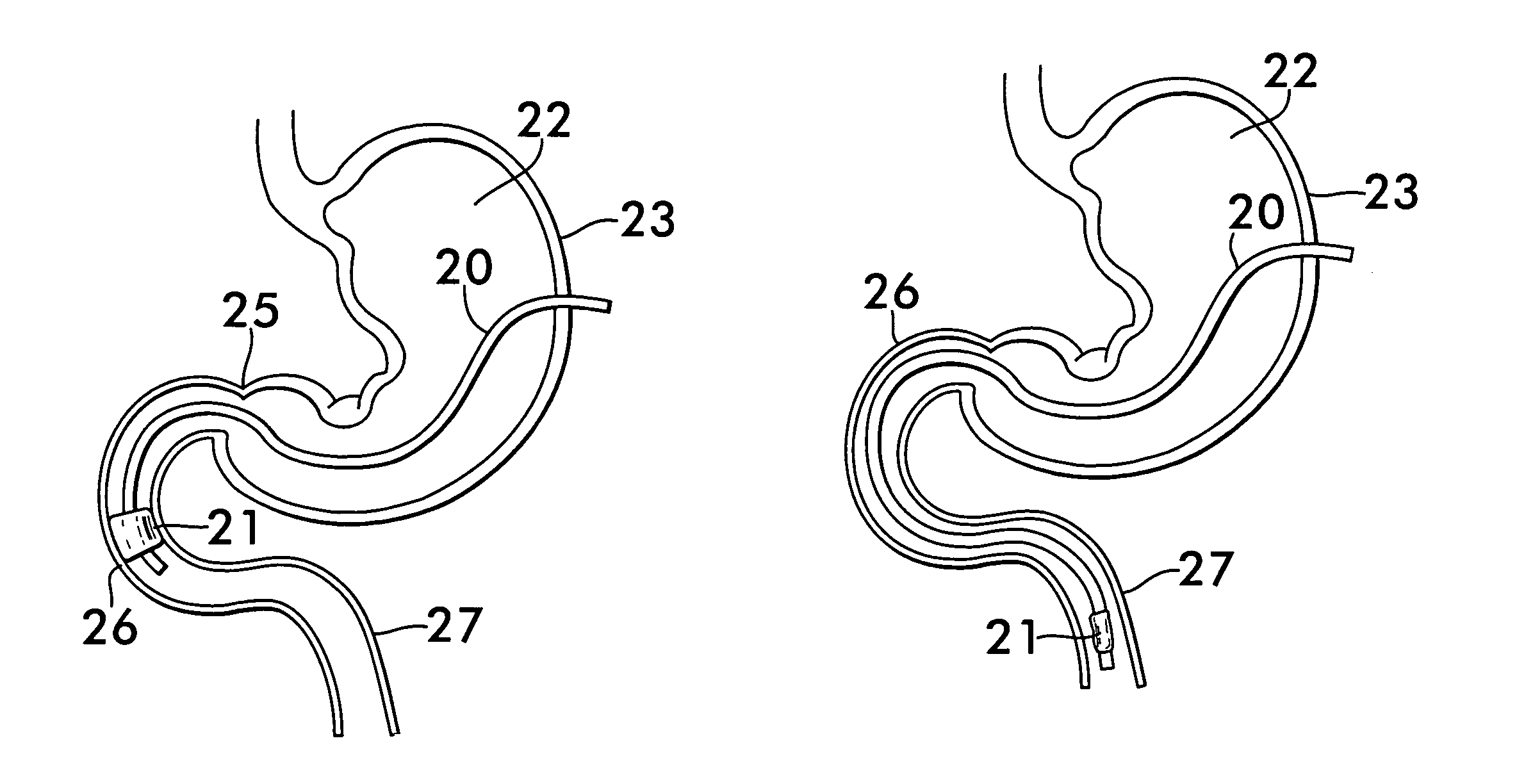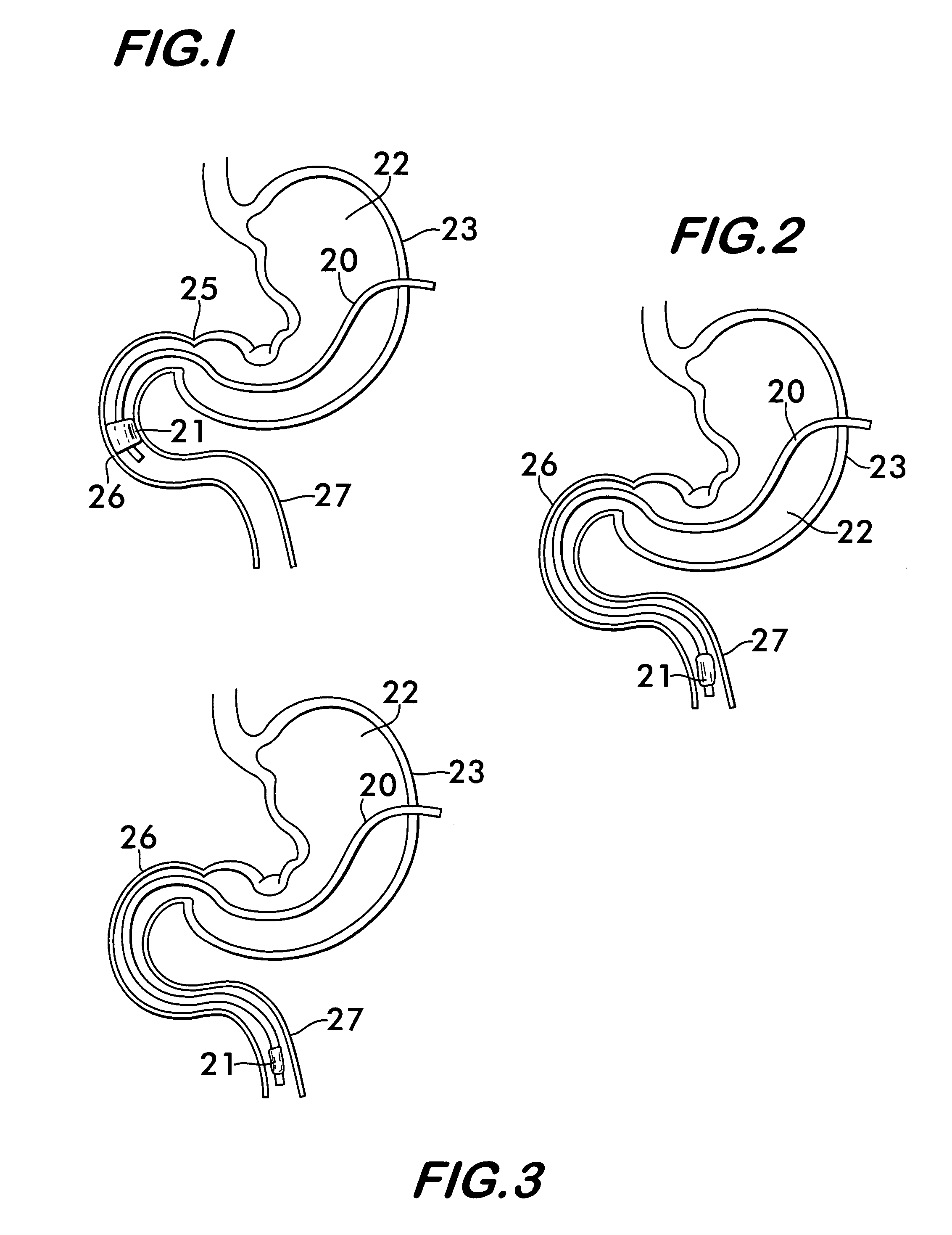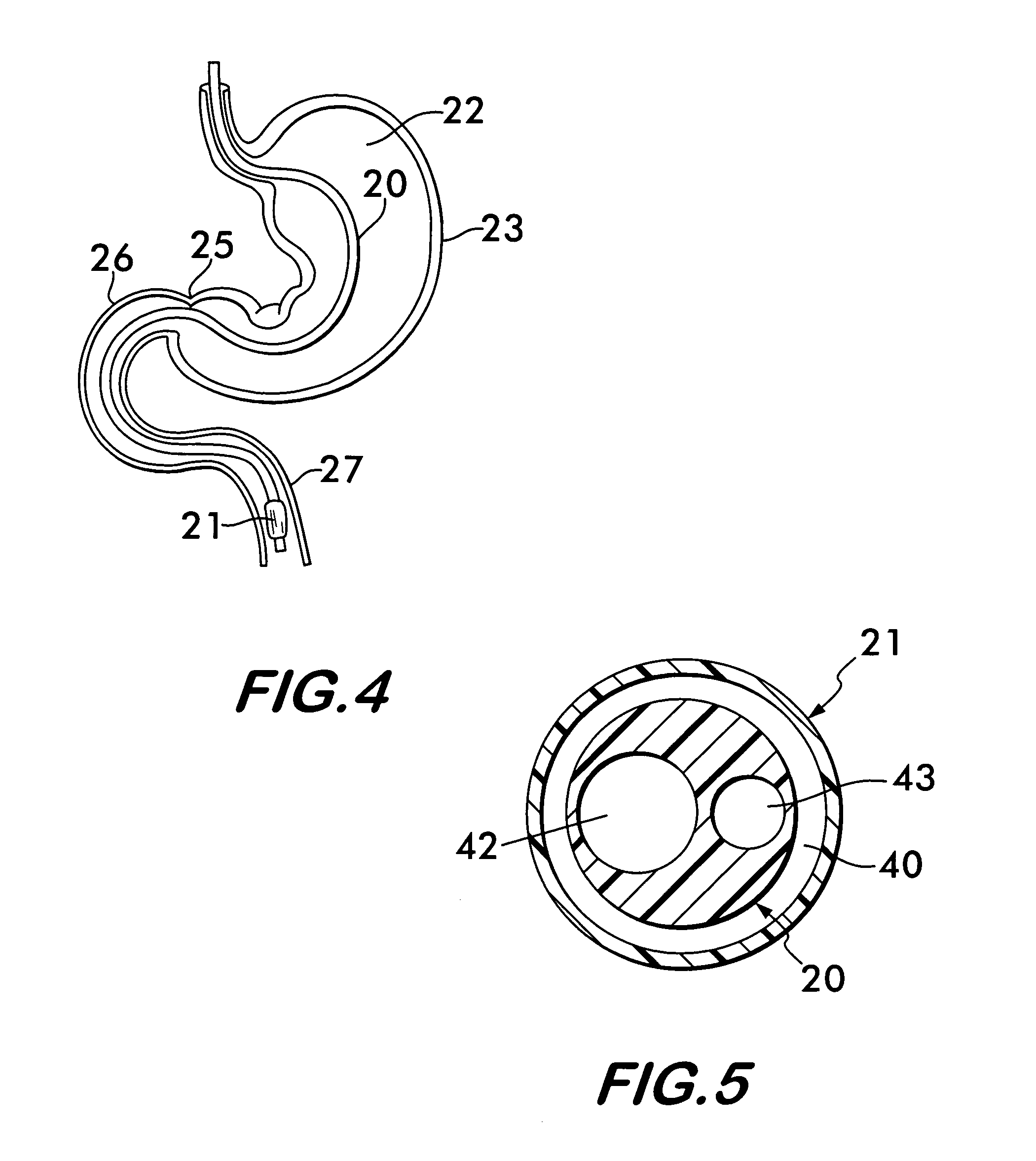Gastrojejunal feeding tube
a feeding tube and gastrojejunal technology, applied in balloon catheters, surgery, other medical devices, etc., can solve the problem that the placement is difficult to be done endoscopically alone, and achieve the effect of avoiding unwanted effects
- Summary
- Abstract
- Description
- Claims
- Application Information
AI Technical Summary
Benefits of technology
Problems solved by technology
Method used
Image
Examples
Embodiment Construction
[0018]A feeding tube 20, for instance of the type shown in U.S. Pat. No. 4,490,143, incorporated herein by reference, is placed into the position as shown in FIG. 1, using an endoscope in the well-known prior art manner. The feeding tube 20, has at the end thereof an inflatable and deflatable balloon 21 capable of being so inflated and deflated with either air or liquid passed to the balloon through the feeding tube itself during the placement of the tube.
[0019]As seen in FIG. 5, the tube 20 has a body 40 containing lumen 42 and lumen 43. Air or other fluids is pumped, or released, through lumen 43 to selectively inflate and deflate balloon 21. Food and liquid is passed along tube 20 through lumen 42.
[0020]As seen in FIG. 1 the balloon 21 is partially inflated when the tube 20 is passed into the stomach 22 through the abdominal wall 23 in a well-known prior art manner as shown, for instance, in the '106 patent, with the aid of an endoscope, to a position as shown in FIG. 1. In this ...
PUM
 Login to View More
Login to View More Abstract
Description
Claims
Application Information
 Login to View More
Login to View More - R&D
- Intellectual Property
- Life Sciences
- Materials
- Tech Scout
- Unparalleled Data Quality
- Higher Quality Content
- 60% Fewer Hallucinations
Browse by: Latest US Patents, China's latest patents, Technical Efficacy Thesaurus, Application Domain, Technology Topic, Popular Technical Reports.
© 2025 PatSnap. All rights reserved.Legal|Privacy policy|Modern Slavery Act Transparency Statement|Sitemap|About US| Contact US: help@patsnap.com



